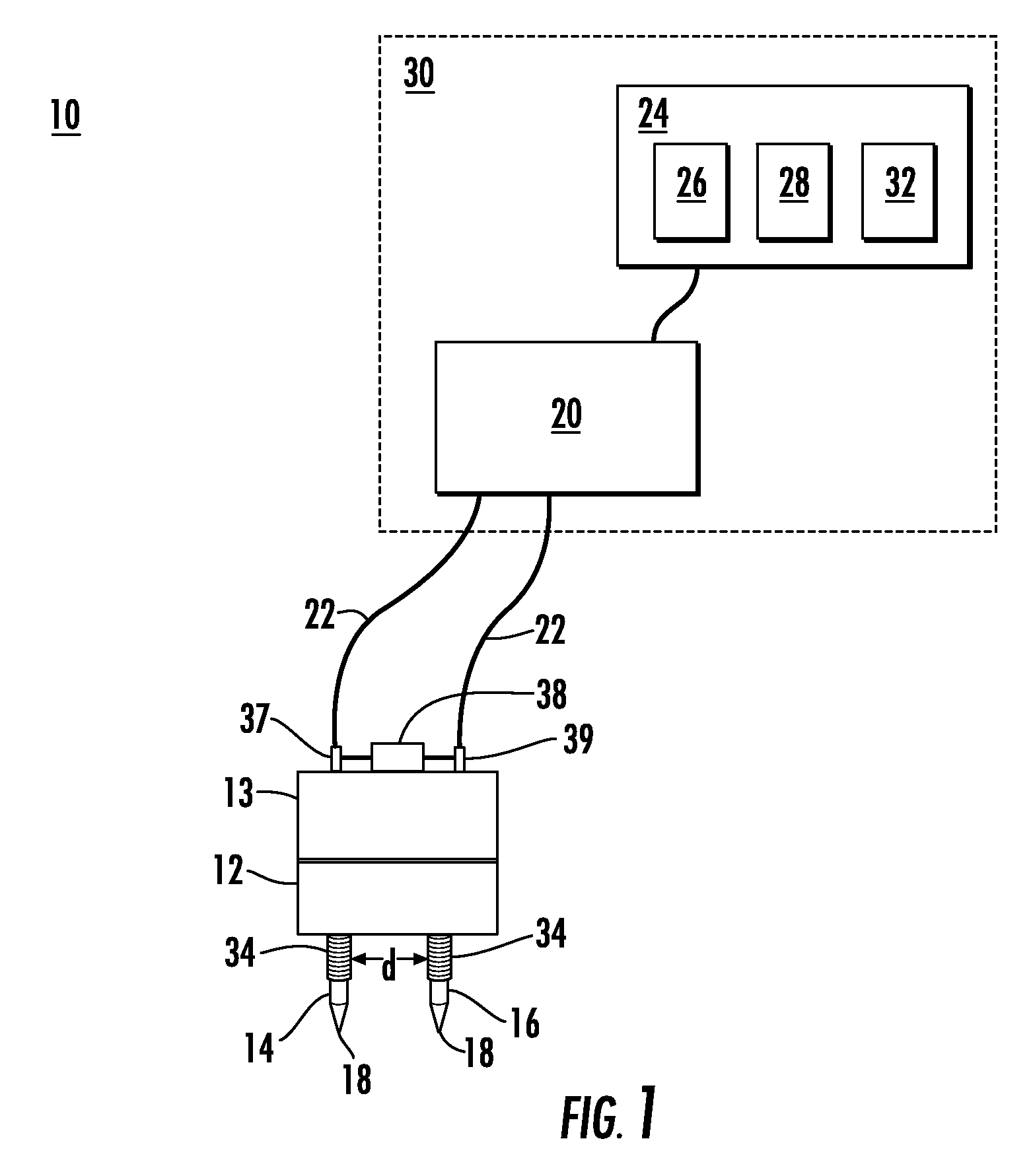System and method for applying plasma sparks to tissue
a plasma spark and tissue technology, applied in the field of minimally invasive methods, can solve problems such as tissue damage caused by sparks, and achieve the effect of minimal collateral damage and clean and precis
- Summary
- Abstract
- Description
- Claims
- Application Information
AI Technical Summary
Benefits of technology
Problems solved by technology
Method used
Image
Examples
example 1
Treatment of Cellulite
[0122]The area on skin that is affected by cellulite dimples or folds was identified by the clinician and, where desired, the clinician used a dermal marker to delineate the dimples. Electrodes, such as those shown in FIG. 10, made of conducting material such as metals and for example, 27G, were inserted into the tissue. Then, after selection of treatment parameters, pulses were delivered at a desired repetition rate, for example, 10 Hz. The proximal parts of the microneedles were insulated with a material that has a high voltage breakdown threshold, such as poly(p-xylylene) polymers sold by Para Tech Coating, Inc., under the PARYLENE trademark. The distal part is bare, i.e., uninsulated. Typically, the first few pulses acted as pre-plasma tissue conditioning pulses (example, 5-100 pulses), which changed the electrical characteristics of the tissue between the electrodes. This was evidenced by a decrease in resistance that ultimately resulted in conditions lead...
example 2
Cutting of Tissue
[0123]The adipose tissue of a pig was cut using the apparatus shown in FIG. 10 and method of the present invention. A picture of this cut is shown in FIG. 4. The individual marks on the ruler in FIG. 4 are 1 mm apart. This tissue cut was achieved using 0.40 J / spark delivered at 12.5 kV pulse voltage. Two partially insulated electrode needles, separated by 7 mm, were used. Eight (8) mm of the length of the needles were inserted into the tissue. Of the 8 mm length, the proximal 6 mm length of the electrode needles were coated with polyester insulation (other materials for insulation can also be used, for example, Parylene) and the distal 2 mm length were bare, i.e., uninsulated. The source impedance was 125 Ohm and the system was matched. The pulse duration was 327 ns. To cut the tissue, 34 pre-plasma tissue-conditioning pulses were applied followed by 20 sparks.
PUM
 Login to View More
Login to View More Abstract
Description
Claims
Application Information
 Login to View More
Login to View More - R&D
- Intellectual Property
- Life Sciences
- Materials
- Tech Scout
- Unparalleled Data Quality
- Higher Quality Content
- 60% Fewer Hallucinations
Browse by: Latest US Patents, China's latest patents, Technical Efficacy Thesaurus, Application Domain, Technology Topic, Popular Technical Reports.
© 2025 PatSnap. All rights reserved.Legal|Privacy policy|Modern Slavery Act Transparency Statement|Sitemap|About US| Contact US: help@patsnap.com



